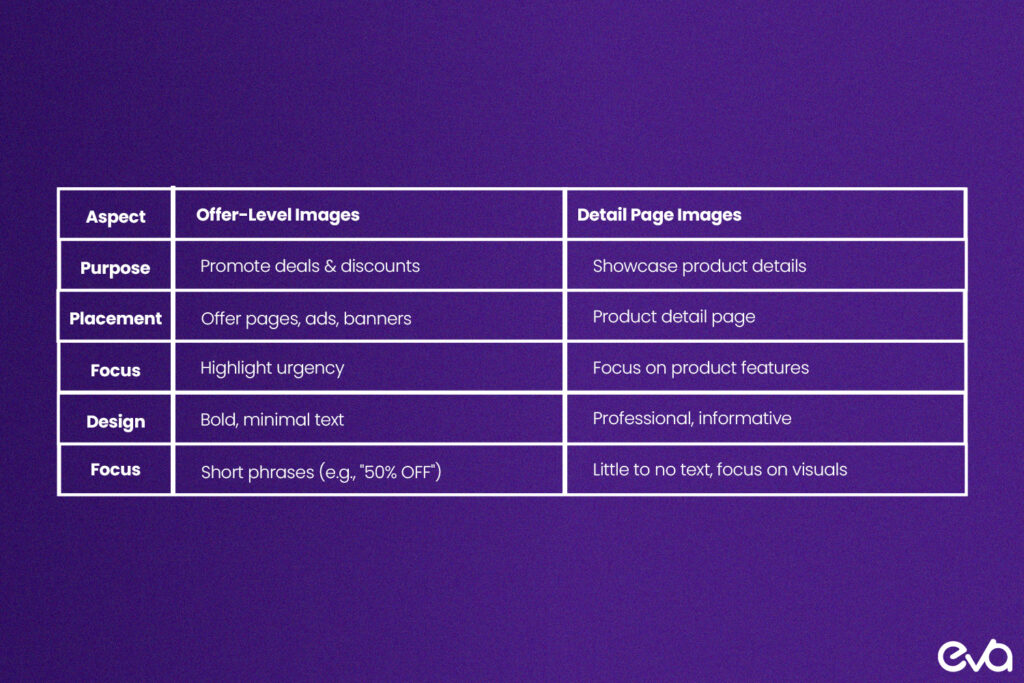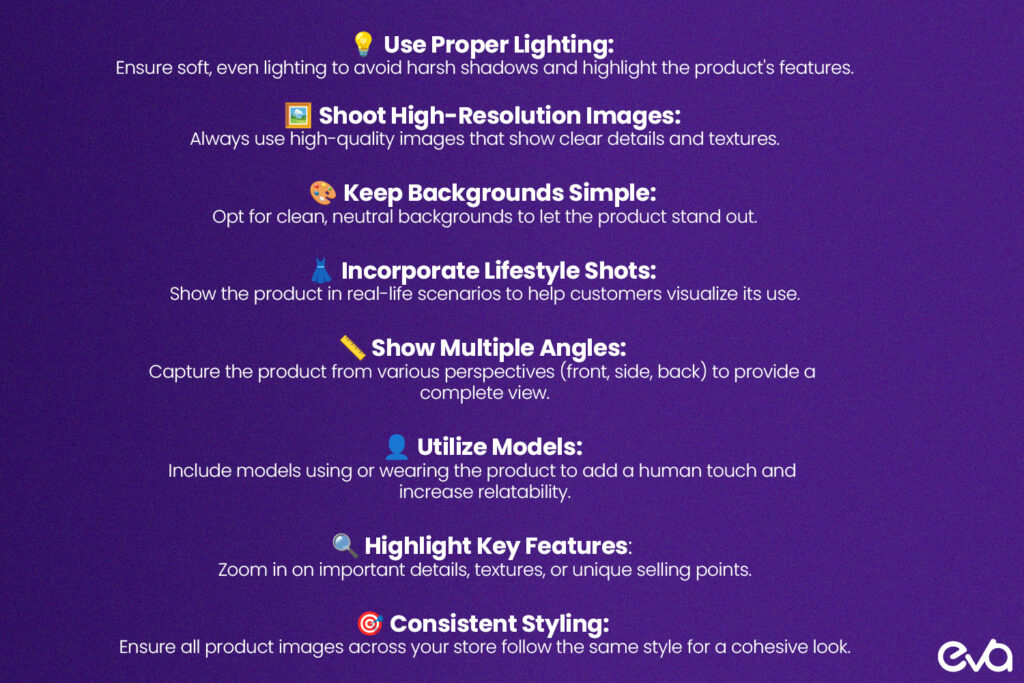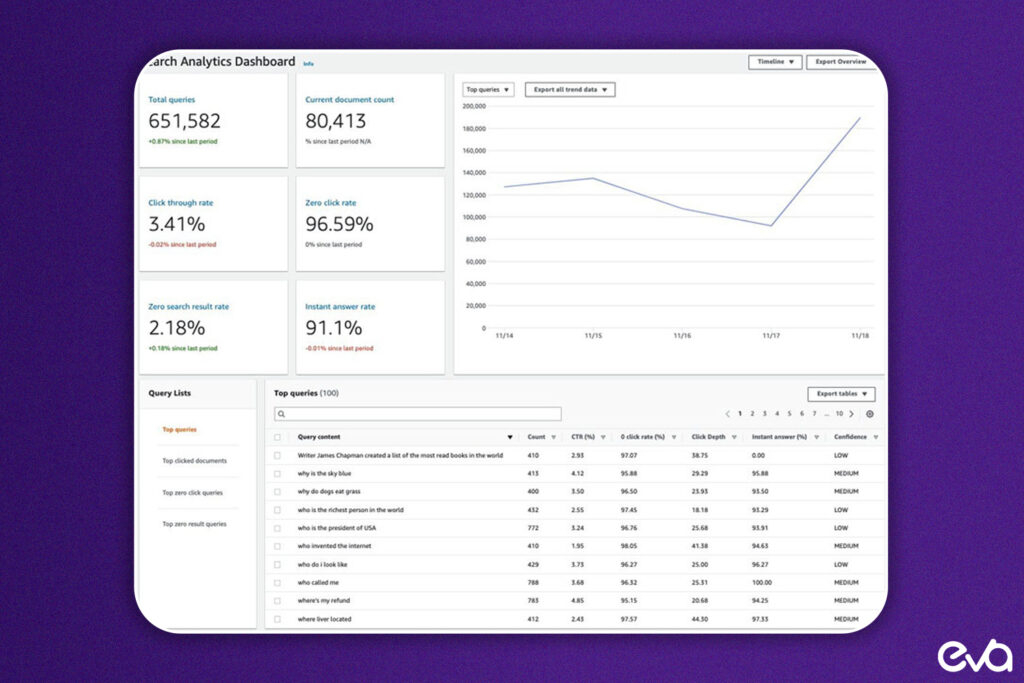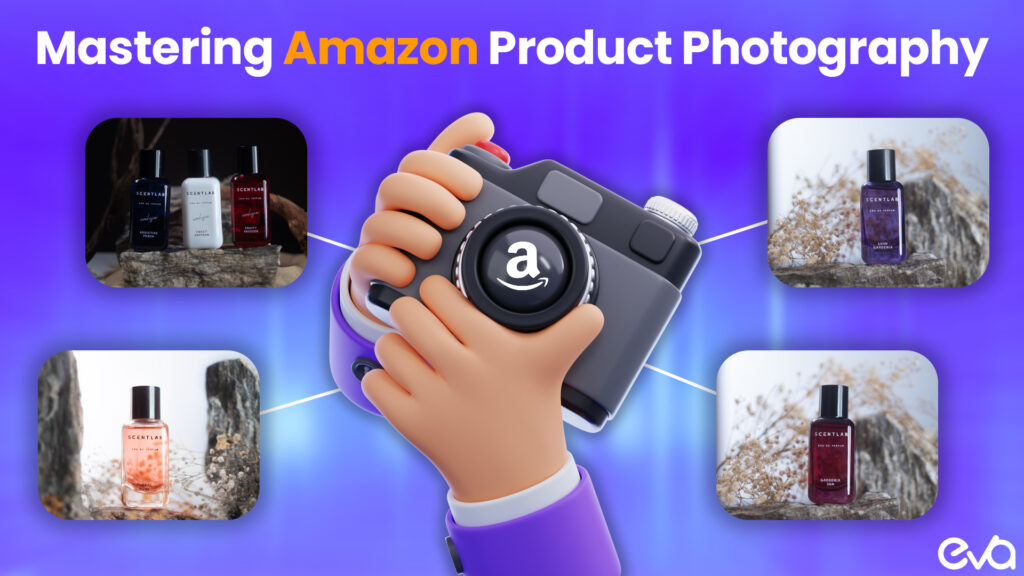In today’s cutthroat eCommerce market where visuals can determine whether a product sells or not, getting Amazon product photography right isn’t just a choice—it’s a must.
If you’re selling on Amazon, your product pictures are often the first thing shoppers see, and they’re key to turning window shoppers into customers.
This guide digs into every part of Amazon product photography giving you tips to create images that follow Amazon’s rules and are eye-catching enough to boost your sales.
In this guide, we’ll cover everything from technical specs to creative tips giving you the know-how to boost your product photos.
We’ll also include key terms like Amazon Ad Agency, Amazon Advertising, Amazon PPC Management, and Amazon Marketing Services.
These terms play a big role in understanding and putting into action effective marketing plans on Amazon, and they’ll help this guide show up higher in search results.
Table of Contents
- Amazon Image Size Requirements for 2024
- Technical Requirements for Amazon Product Photography
- Offer Level Images: Optimizing for Different Product Types
- Creative Guidelines for Amazon Product Photography
- Editing Your Amazon Product Photos
- What to Avoid in Amazon Product Images
- Assigning Image Priority on the Product Page
- Tips and Best Practices for Amazon Product Photos
- Use Lots of Images: Benefits of Multiple Images in Product Listings
- Show Different Angles: Importance of Perspective
- Incorporate Models and People
- Mind the Lighting: Achieving Optimal Lighting Conditions
- A Picture is Worth 1,000 Words—and Sales
- Should You Hire a Professional Photographer?
- How Eva Can Help?
- Conclusion
- FAQs
Amazon Image Size Requirements for 2024
Amazon has specific rules for image sizes, and following them is key to making your product listings the best they can be.
In 2024, these rules remain a big deal in making sure your listings follow Amazon’s policies and give shoppers a great visual experience.
Overview of Size Specifications for Product Images
The minimum size for Amazon product images is 1000 x 1000 pixels, which allows the zoom feature to work.
However, Amazon recommends using images of at least 2000 x 2000 pixels for better clarity and resolution.
The larger the image, the more detailed the product appears, offering customers a closer look at the item’s features.
- Minimum size: 1000 x 1000 pixels
- Recommended size: 2000 x 2000 pixels
- Accepted formats: JPEG, PNG, TIFF
- Resolution: 72 dpi or higher

Importance of Complying with Size Requirements
Complying with Amazon’s image size guidelines is not just a matter of policy; it’s a crucial step that can make or break your sales.
Amazon has strict policies regarding image quality, and failing to meet these standards can result in your images being rejected.
More importantly, images that do not meet the recommended size are less likely to engage customers, leading to lower conversion rates. This underlines the urgency of adhering to these guidelines.
Large, high-resolution images give shoppers the ability to zoom in and view the product details closely. This not only enhances the overall shopping experience but also builds trust.
Customers can see the product in detail, which can lead to higher sales and lower return rates, as they are more likely to be satisfied with their purchase.
Technical Requirements for Amazon Product Photography
Beyond size, your product images must meet several technical specifications to ensure compliance and maximize their effectiveness.
These guidelines create consistency across all product listings, offering customers a seamless and professional shopping experience.
Resolution and File Format Specifications
Amazon mandates that all product images be high-resolution, with a minimum resolution of 72 dpi.
While JPEG files are preferred due to their file size and quality balance, Amazon also accepts PNG and TIFF formats.
Regardless of the format, ensure your images are crisp, clear, and free from pixelation.
Essential Technical Elements for High-Quality Images
Your product images should be high-resolution and meet specific technical elements to ensure they are optimized for desktop and mobile viewing. These include:
- RGB color format (Amazon does not accept CMYK)
- No added text, watermarks, or logos on the main image
- Tightly cropped images that focus solely on the product without unnecessary white space
Following these technical guidelines ensures your images display correctly across all devices, improving the customer experience and boosting your sales potential.
Offer Level Images: Optimizing for Different Product Types
Amazon product images are categorized into two main types: Offer-Level Images and Detail-Page Images. Offer-level images appear on search result pages and are crucial for grabbing the shopper’s attention.

Understanding Offer Level vs. Detail Page Images
Offer-level images are often the first interaction customers have with your product. These images appear in search results and on category pages, and they should be optimized to attract clicks.
For instance, a simple, clear image of the product against a white background. Detail Page Images, on the other hand, appear once the customer has clicked through to your product page.
These images should provide more comprehensive views of the product, highlighting its features from various angles. For example, a lifestyle image showing the product in use.
How to Optimize Images for Different Offer Types
For Offer-Level Images, focus on simplicity and clarity. These images should show the product against a white background with no distractions.
Detail Page Images can be more creative, showing the product in use from different angles and with close-ups of key features.
Offering a variety of images helps customers make more informed purchasing decisions.
Creative Guidelines for Amazon Product Photography
While technical compliance is crucial, creativity is equally important in making your product stand out.
Creative, high-quality images can increase the likelihood of a sale and set your product apart from competitors.
Best Practices for Creative and Engaging Product Photography
To create engaging product images, follow these best practices:
- Use lifestyle images to show the product in use. This technique helps customers visualize the product daily, making it more relatable and appealing. It’s a powerful way to engage potential buyers and increase the likelihood of a sale.
- Include close-up shots: Highlight the details that make your product unique, such as texture, materials, or special features.

As per Amazon’s guidelines, use a clean, white background for the primary image. This means that the product should be the image’s main focus, with no distracting elements in the background.
A well-lit, evenly white background can help your product stand out and attract more customers.
Creative images can significantly enhance the appeal of your product listings, helping you capture the attention of potential buyers.
Techniques for Captivating Visuals
Incorporate elements like models, props, and appropriate backgrounds to create a visual story. However, ensure that these elements stay within the product.
The focus should always remain on what you’re selling. Consider adding lifestyle shots to demonstrate how the product is used in real-world settings.
Editing Your Amazon Product Photos
Editing your product photos can improve their quality, but it is essential to do just what is necessary.
Over-editing can result in misleading images, which could harm your product’s reputation and lead to increased returns.
Tools and Techniques for Effective Image Editing
Use tools like Adobe Photoshop or Lightroom to enhance your images. Adjust the lighting, color balance, and sharpness to ensure your product is presented in the best possible light.
However, avoid heavy filters or unrealistic edits, as these can distort the product’s actual appearance.
Maintaining Image Quality During Editing
Permanently save your images in high resolution to maintain their quality. Compressed or low-resolution images can look pixelated and unprofessional, which may discourage potential buyers.
What to Avoid in Amazon Product Images
Amazon has strict rules about what you can and cannot include in your product images. Follow these rules to avoid having your pictures rejected or your listing penalized.
Common Mistakes in Amazon Product Photography
- Blurry or low-resolution images: Always use high-quality photos to present your product in the best light.
- Excessive text or logos: Avoid adding unnecessary text, watermarks, or promotional logos to your images.
- Misleading images: Ensure that your images accurately represent the product.
Misleading or Inappropriate Images to Avoid
Using stock photos or highly stylized images that do not accurately depict the product can lead to negative reviews or high return rates.
Customers rely on images to make informed purchasing decisions, so your photos must be truthful and transparent.
Assigning Image Priority on the Product Page
The order in which you present your images can significantly impact how customers interact with your product listing.
Understanding the Importance of Image Order
The first image should always show the product clearly on a white background, as this is the image that will appear in search results.
Subsequent images can include lifestyle shots, close-ups, and photos from different angles.
Best Practices for Image Sequencing on Product Listings
Start with a clear, simple image of the product, followed by lifestyle images that show it in use. Close-up shots of critical features should come next, helping customers understand the finer details of the product.

Tips and Best Practices for Amazon Product Photos
Creating professional-quality product photos requires the right equipment, techniques, and attention to detail.
Comprehensive Tips for Capturing Stunning Product Images
- Invest in a high-quality camera: While smartphones improve, a DSLR or mirrorless camera still provides the best results.
- Use a tripod: Stability is critical to avoiding blurry images.
- Shoot in natural light: Natural lighting offers a softer, more flattering look for most products.
Using the Right Equipment and Techniques
Use a DSLR or mirrorless camera with a high-quality lens for optimal results. A lightbox can also help ensure even lighting and eliminate harsh shadows.
Use Lots of Images: Benefits of Multiple Images in Product Listings
Amazon allows sellers to upload up to nine images per product. Use this to provide customers with a comprehensive view of your product.
Benefits of Multiple Images in Product Listings
Multiple images help customers better understand the product and build trust. When customers feel confident purchasing, they’re more likely to complete the transaction.
Strategies for Showcasing Products from Different Angles
Show your product from every angle. Include close-ups of essential features, lifestyle images, and multiple angles to give customers a 360-degree view of the product.
Show Different Angles: Importance of Perspective
Offering different angles of your product helps provide a full picture, ensuring potential buyers understand exactly what they are purchasing.
Importance of Showing Products from Various Perspectives
Different perspectives give customers a clear understanding of your product’s size, shape, and features. This reduces uncertainty and increases the likelihood of a sale.
Tips for Effective Angled Photography
Shoot from above, below, and at eye level to capture the full range of your product’s attributes. Use angled shots to highlight specific features or unique design elements.
Incorporate Models and People
Humanizing your product photos can significantly enhance their appeal. Showing models using your product helps potential buyers visualize how it fits into their lives.
How Using Models Enhances Product Appeal
Seeing a product in action often makes it more relatable to shoppers. Models can demonstrate how the product is used, its size, and how it looks in real-life situations.
Tips for Incorporating Human Elements in Photography
When using models, make sure they don’t distract from the product. The focus should remain on the product, with the model helping to show its functionality or style.
Mind the Lighting: Achieving Optimal Lighting Conditions
Lighting is one of the most critical aspects of product photography. Poor lighting can make images dull, unprofessional, and unappealing.
Importance of Proper Lighting in Product Photography
Proper lighting brings out your product’s best features, highlighting its details and creating an inviting visual. Bad lighting can cast unwanted shadows and make your product look less appealing.
Techniques for Achieving Optimal Lighting Conditions
Whenever possible, shoot in natural light. If that’s not an option, use softboxes or diffused artificial light to eliminate shadows and evenly illuminate the product.
A Picture is Worth 1,000 Words—and Sales
High-quality product images have a direct impact on your sales. Great images create a positive first impression and build trust with your audience.
The Impact of Quality Photography on Sales
Listings with professional-quality images consistently outperform those with lower-quality photos. Good images help reduce return rates, generate better reviews, and increase conversion rates.

Case Studies of Successful Product Photography
Companies that invest in high-quality photography often see significant improvements in their sales performance. For example, brands that update their listings with professional photos usually notice a boost in both traffic and conversion rates.
Should You Hire a Professional Photographer?
Hiring a professional photographer may be the best option if you’re serious about creating high-quality product images. While this comes with a cost, the return on investment can be significant.
Pros and Cons of Hiring a Professional
Professional photographers have the experience, equipment, and skills to capture stunning product images. However, they can be costly, and the expense may only be feasible for some sellers.
Factors to Consider When Making Your Decision
Consider the complexity of your product and the importance of visuals in your specific category. Investing in professional photography can pay off in the long run if your product relies heavily on visual appeal.
How Eva Can Help?
Eva Commerce is a leading eCommerce technology company committed to helping brands achieve sustainable growth on Amazon, Walmart, and other vital marketplaces.
Our powerful AI-driven platform and expert support enable brands to optimize their advertising and listing strategies while making informed, data-driven decisions.
Unlike other tools, Eva’s AI-powered platform uniquely integrates critical metrics such as inventory levels, conversion rates, and profitability across multiple marketplaces—not just Amazon.
This context-aware technology ensures your product listings and advertising campaigns are highly effective, maximizing efficiency and ROI.
As an Amazon Advanced Partner and Walmart Strategic Solution Partner, Eva collaborates with global eCommerce leaders such as TikTok, eBay, Shopify, Google, Meta, and Wayfair.
Our platform goes beyond standard listing optimizations by providing AI insights that guide brands in choosing the most impactful advertising and marketing mix for long-term profitability.
Whether you’re looking to master Amazon product photography, optimize listings, or drive advertising results, Eva Commerce ensures your strategy is tailored for success.
Conclusion
Mastering Amazon product photography is crucial for standing out in a competitive marketplace. High-quality images enhance your products’ visual appeal, increase customer trust, boost conversions, and ultimately drive sales.
From understanding Amazon’s image size requirements and technical specifications to incorporating creative techniques like lifestyle photography and human models, each aspect plays a pivotal role in the success of your product listings.
You can ensure your products are presented best by following the tips outlined in this guide—optimizing image sizes, maintaining high-quality resolution, using multiple images, and leveraging proper lighting.
Additionally, editing your pictures effectively and avoiding common pitfalls like misleading visuals will help reduce returns and foster positive customer experiences.
Invest time and resources into creating professional-quality images. Consider hiring a professional photographer or investing in high-end photography equipment if possible.
As Amazon evolves, staying compliant with guidelines while using creative strategies will help you maintain an edge over competitors.
Remember to update your images regularly to keep your product listings fresh and engaging.
Leveraging advanced tools like Eva Commerce’s AI-powered platform is essential for sellers who want to improve their product listings and advertising efforts.
Eva’s platform provides insights into optimizing product listings, adjusting advertising strategies, and making data-driven decisions for long-term growth.
Ready to elevate your Amazon product listings?
Eva Commerce offers a comprehensive solution that integrates AI-driven insights, advanced analytics, and expert support to help you maximize your sales potential.
Contact our experts to see how Eva’s platform can take your Amazon business to new heights!
FAQs
Amazon requires product images to be at least 1000 x 1000 pixels to enable the zoom feature. However, the recommended size is 2000 x 2000 pixels for optimal clarity. Ensuring your images meet these requirements enhances customer experience and boosts sales.
To improve image quality, use a high-resolution camera and proper lighting. Editing tools like Adobe Photoshop can help enhance brightness, sharpness, and contrast. Be sure to maintain the image’s authenticity to avoid misleading customers.
Good lighting ensures your product is clearly visible, bringing out essential details and making it more attractive to potential buyers. Natural lighting is ideal, but using softbox lighting or a lightbox can help achieve even, professional-quality illumination.
Yes, lifestyle images are allowed and encouraged. These images showcase your product in a real-world setting, helping customers visualize how they would use it. Remember to keep the focus on the product itself and avoid unnecessary distractions.
Use professional editing tools like Adobe Lightroom or Photoshop to enhance your images without altering the product’s true appearance. Avoid excessive filters or over-editing that may mislead buyers. Keep the images clear, crisp, and authentic.
Start with a clean, white-background image of the product for the main image. Follow it with lifestyle shots, close-ups of unique features, and images showing the product from different angles. Proper image sequencing can make your listing more appealing to shoppers.
Incorporating human models in your images can enhance product appeal by showing the product in use. Models help potential buyers visualize the size, functionality, and how the product fits into their daily lives.
Eva Commerce’s AI-powered platform provides tools to help optimize your product listings, including image quality recommendations, performance analytics, and insights into improving your overall sales strategy. You can learn more about optimizing your listings by visiting our Drive Sales with Amazon Display Ads: A Complete Guide.
Yes, Amazon allows up to 9 images per product. Using multiple images from different angles and perspectives builds trust with customers and provides a more comprehensive view of your product. This leads to higher conversion rates and fewer returns.
While you can take high-quality images on your own with the right equipment, hiring a professional photographer can ensure top-tier results. If budget allows, professional photographers can offer expertise and equipment to elevate your product visuals.








